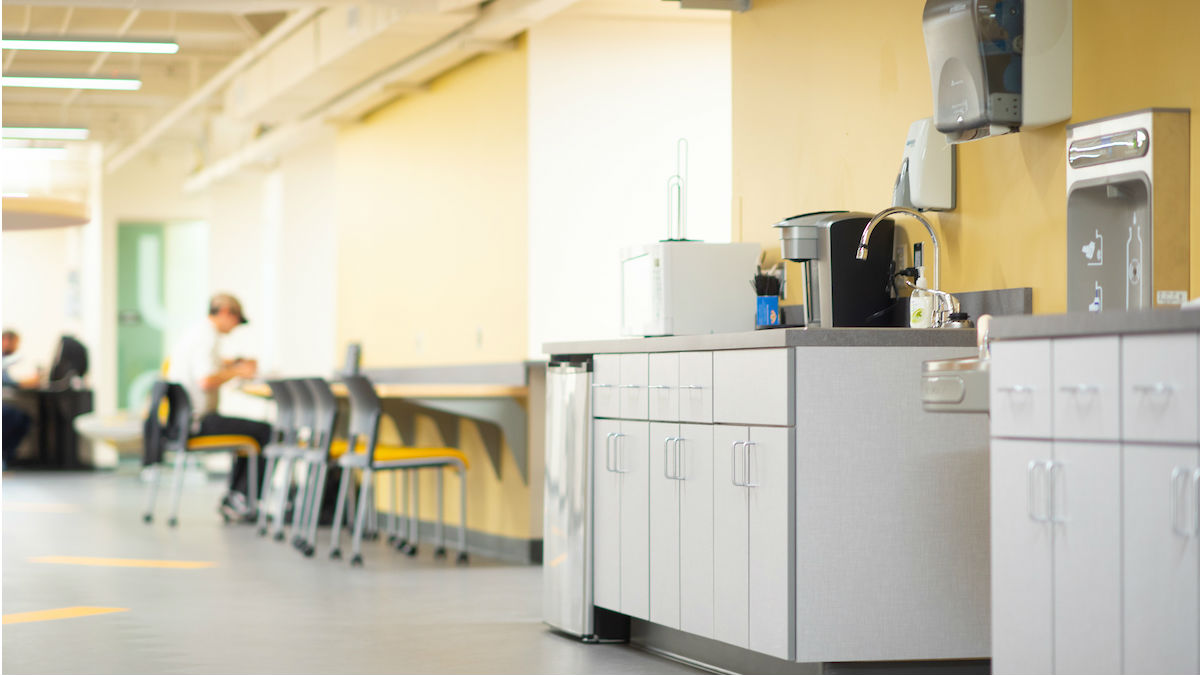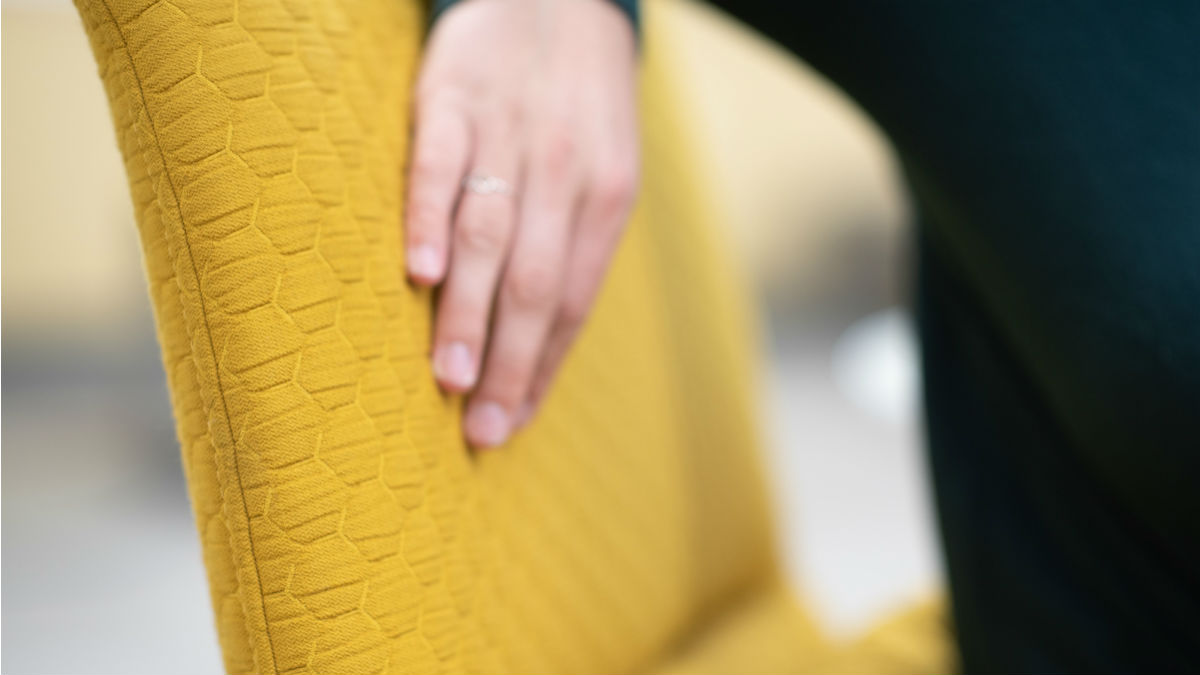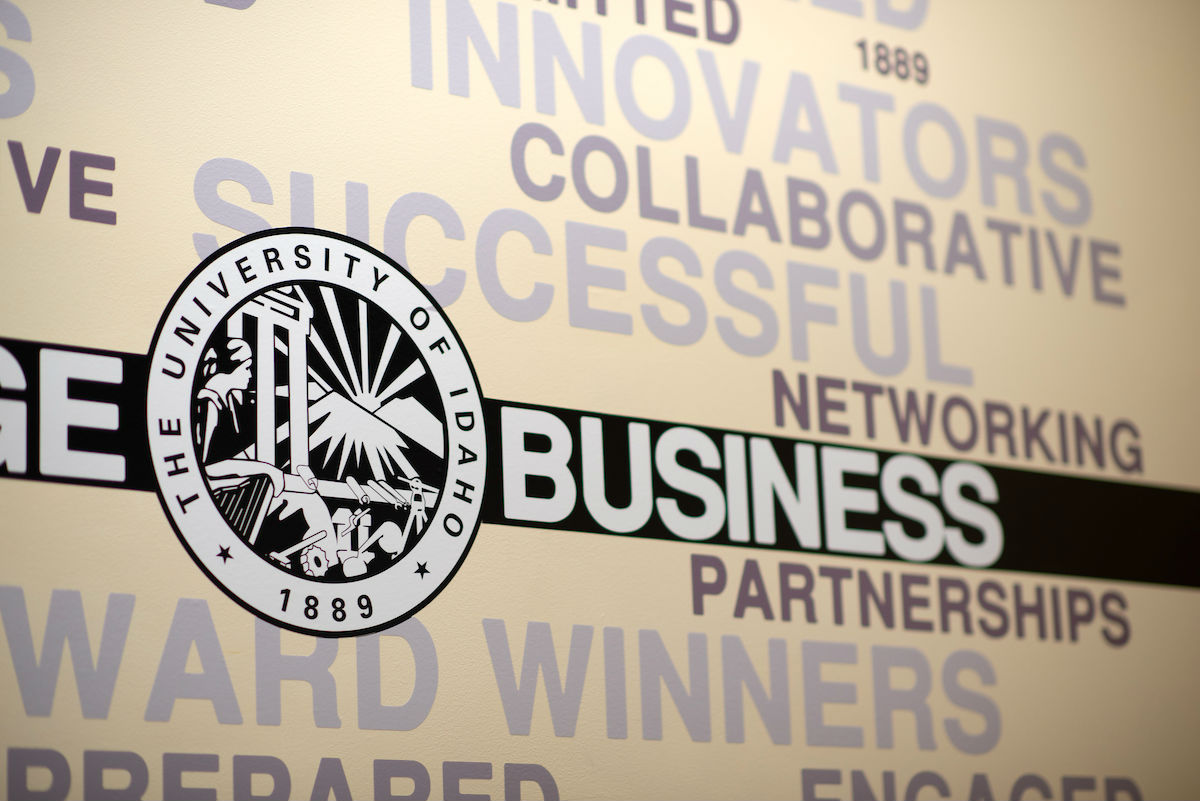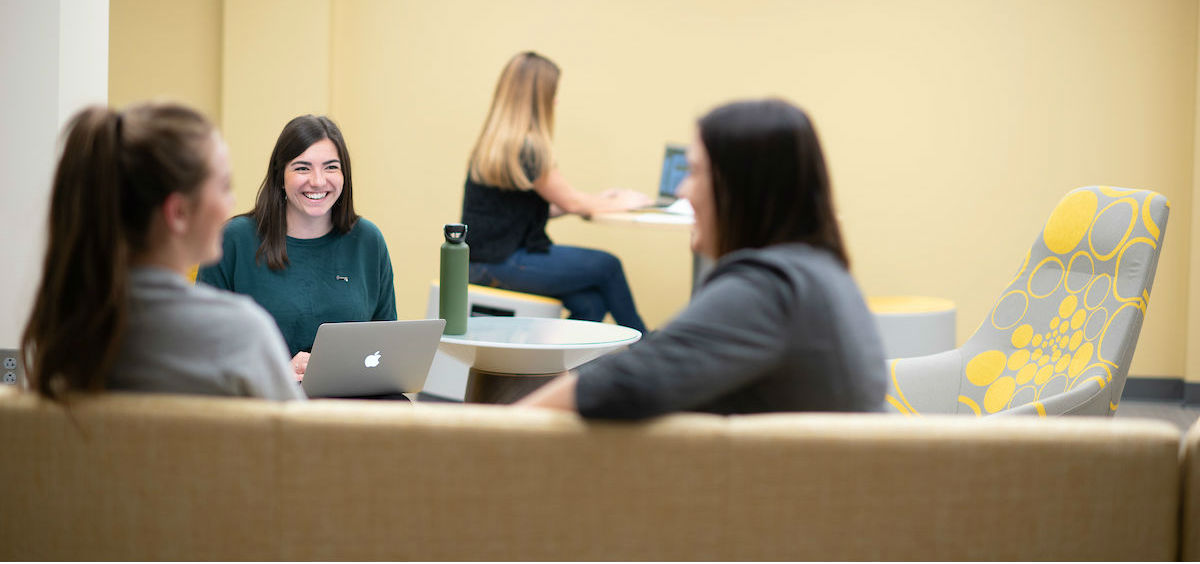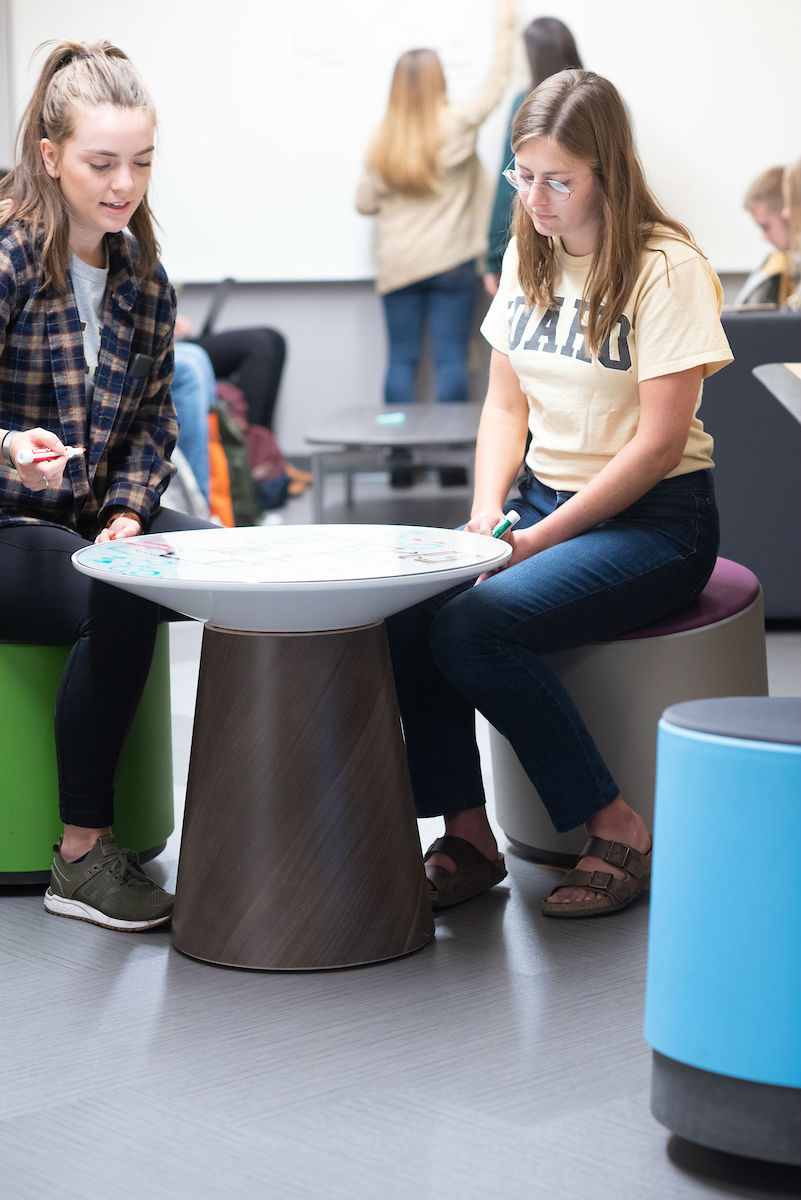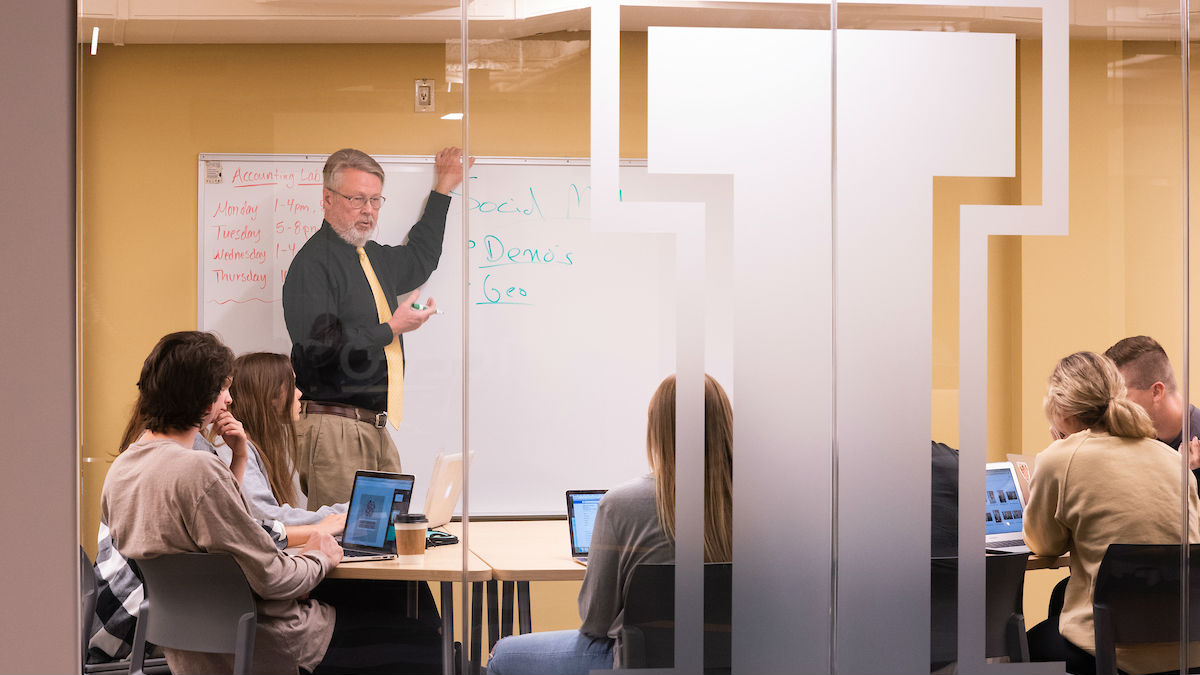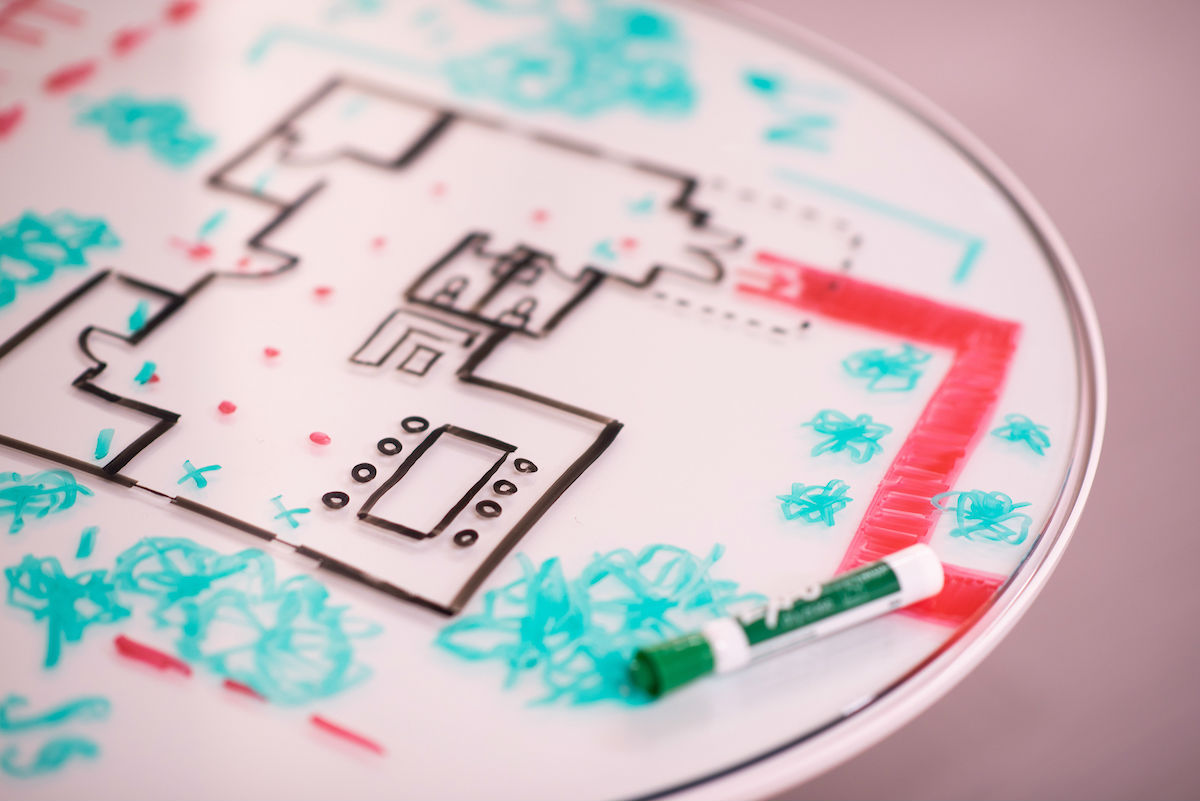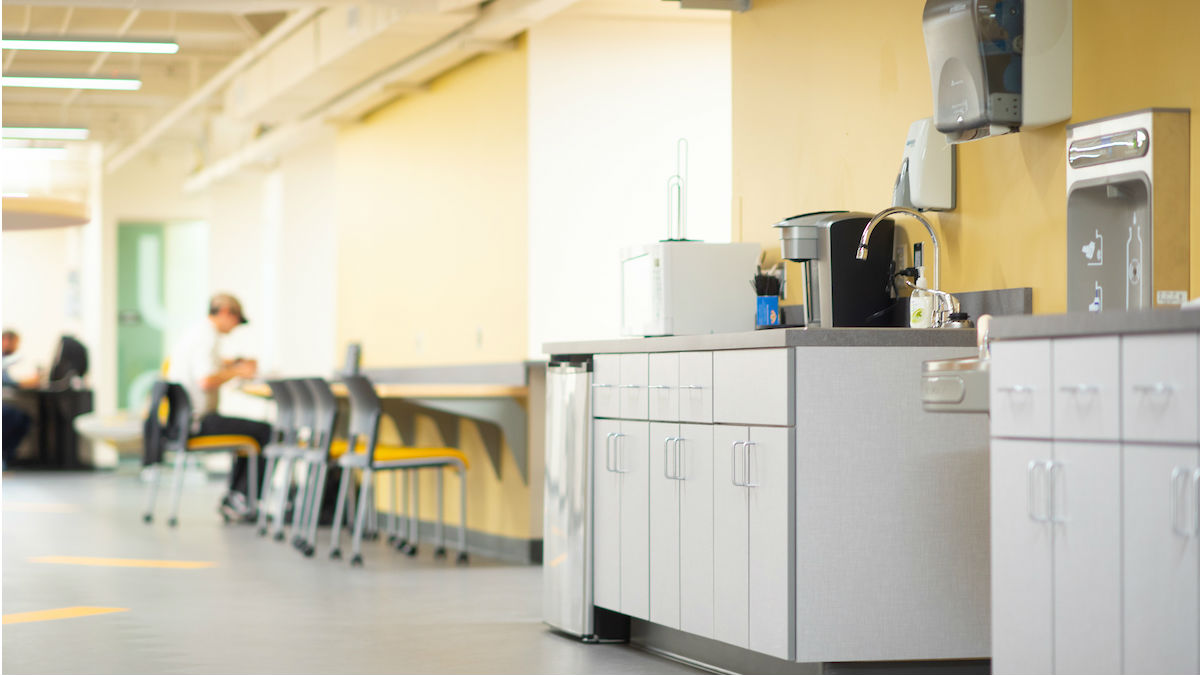Breathing Life into a Space
Business students raised the money, interior design students redesigned the space.
When emerging interior designers Alyssa Andersen and Erica Albertson first took stock of the student level in the J.A. Albertson Building, they heard crickets.
Not literally — but they didn’t hear the hustle and bustle expected of a space designed for students in the College of Business and Economics (CBE).
Set in the basement, the student level was, according to survey responses from a U of I service marketing class, drab and dungeon-like. The ceiling exposed industrial pipes. Tables and chairs were strewn aimlessly about. Wi-Fi and cellphone service faded in and out. Sound reverberated off every nook and cranny. And the walls, painted white, offered an uninspiring backdrop.
According to the survey results, 45 percent of business students frequented the basement less than 10 times a year. Eighteen percent never used it all.
To breathe new life into the vastly underused 4,900-square-foot space, business students sought the expertise of U of I’s budding interior designers. In fall 2015, Professor Mike McCollough’s service marketing class and Interim Program Head and Professor Rula Awwad-Rafferty’s interior design class came together.
Andersen and Albertson saw enormous potential in the basement. They wanted the space to reflect the modernity and innovation of the building’s top three floors, built in 2002, and they wanted it to serve students’ needs, primarily through opportunities for teamwork and collaboration — the pillars of CBE.
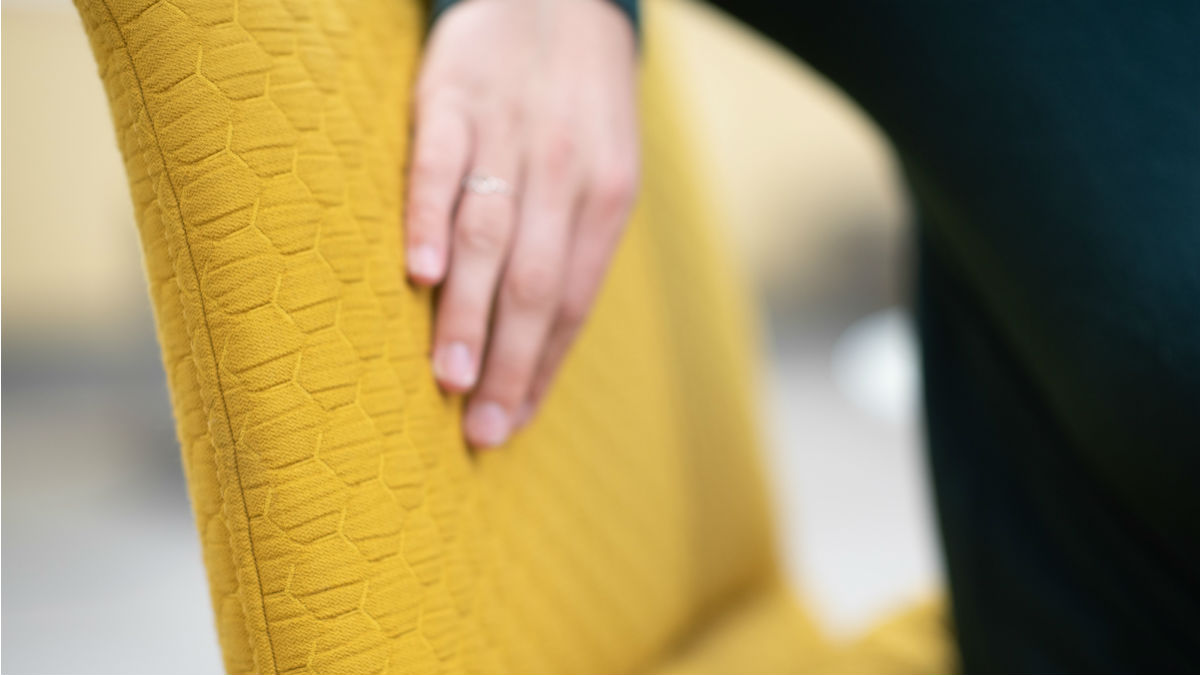
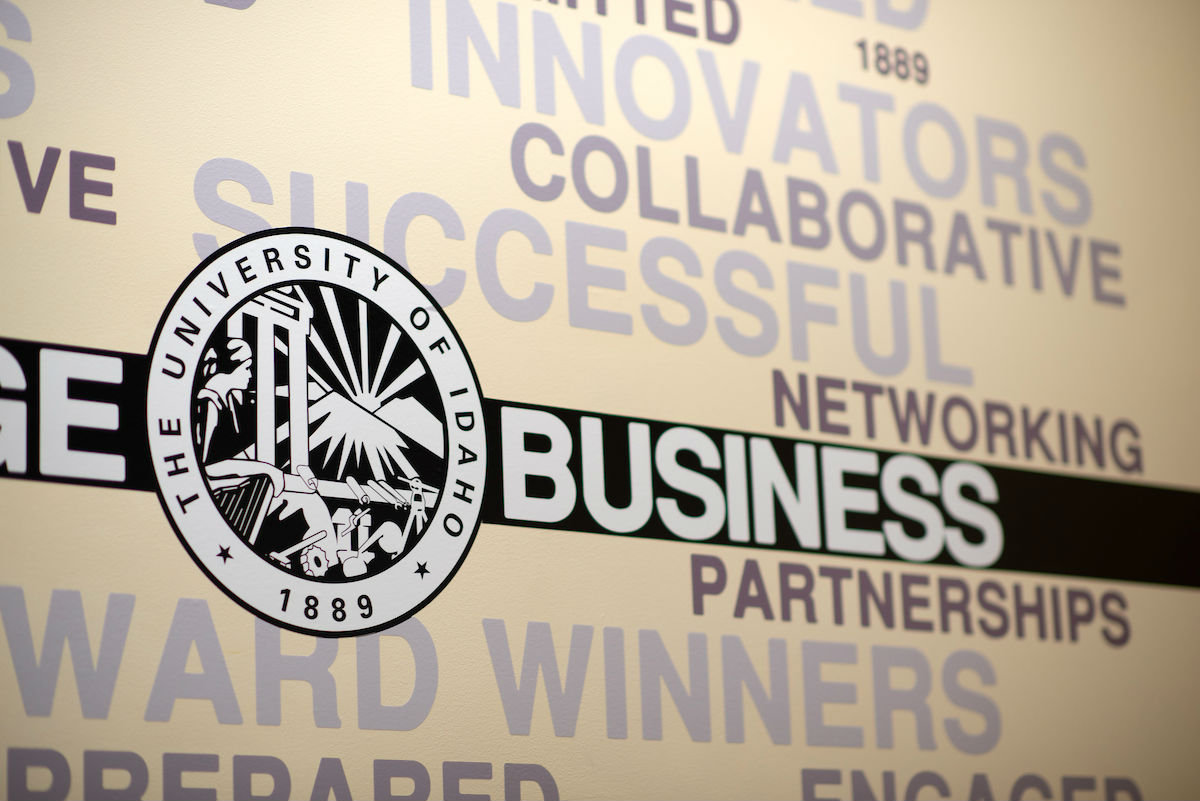
Fostering a Connection
When business student Micah Johnson came on board that same semester, he was eager to be part of a project that would foster community.
“The statistics show that even as we develop in a lot of other metrics, humans, in general, are feeling more and more isolated,” Johnson said. “Somehow we have all this social media and we have all these meet-up groups that allow you to email anyone in the world. But people, and Americans especially, are really lonely.
“That’s always been an issue I’ve been fascinated by,” said Johnson, who graduated in spring 2018 with a Bachelor of Science in business marketing and a Bachelor of Arts in modern languages. “So having a project that underscored community with educating people — it was mind-blowing for me.”
As part of their coursework, Johnson’s classmates distributed surveys to learn what was wanted from a renovated space. To the surprise of faculty members, their lists didn’t include pingpong tables or basketball hoops, but serious study spaces where students could connect with peers.
“Having a project that underscored community with educating people — it was mind-blowing for me.”Micah Johnson
In fall 2016, McCollough’s students traveled to Portland, Oregon, and Seattle, Washington, to find inspiration through tours of contemporary office spaces in the University of Washington business school, the Seattle Public Library and Nike.
Then they brought their observations back to design students, who were researching how layout and color can affect psychology, sense of community and retention.
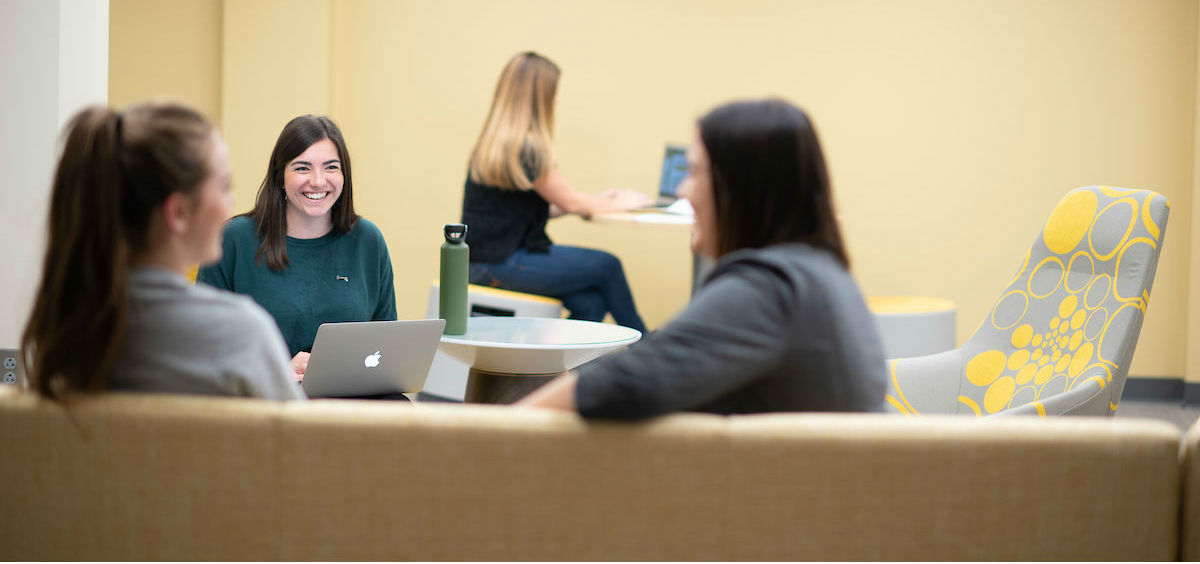
It took a few meetings to speak the same language, but soon enough, the business and interior design students found their groove. Over the next several months, they found a way to transform the space.
Johnson succeeded in leading a crowdfunding campaign, and Vandal Solutions – CBE’s student-run business that provides marketing and advertising services to local businesses and gives all money earned back to the student body – donated $30,000.
Design students set up a guided tour of the basement, in which they hung renderings of what the various spaces would look like, and they brought in furniture that had been researched and priced during a trade fair in Spokane.
With money in the bank and visuals of what the future space could look like, CBE’s Advisory Board — the group of alumni and industry professionals who support and advise the college — was hooked.
“To be able to show the advisory board what the space would look like was critical,” McCollough said. “And when Vandal Solutions showed them that students believed in the project enough to put $30,000 of their own money into it, that loosened up a lot of checkbooks. It said to those donors, ‘This is what students think is important.’”
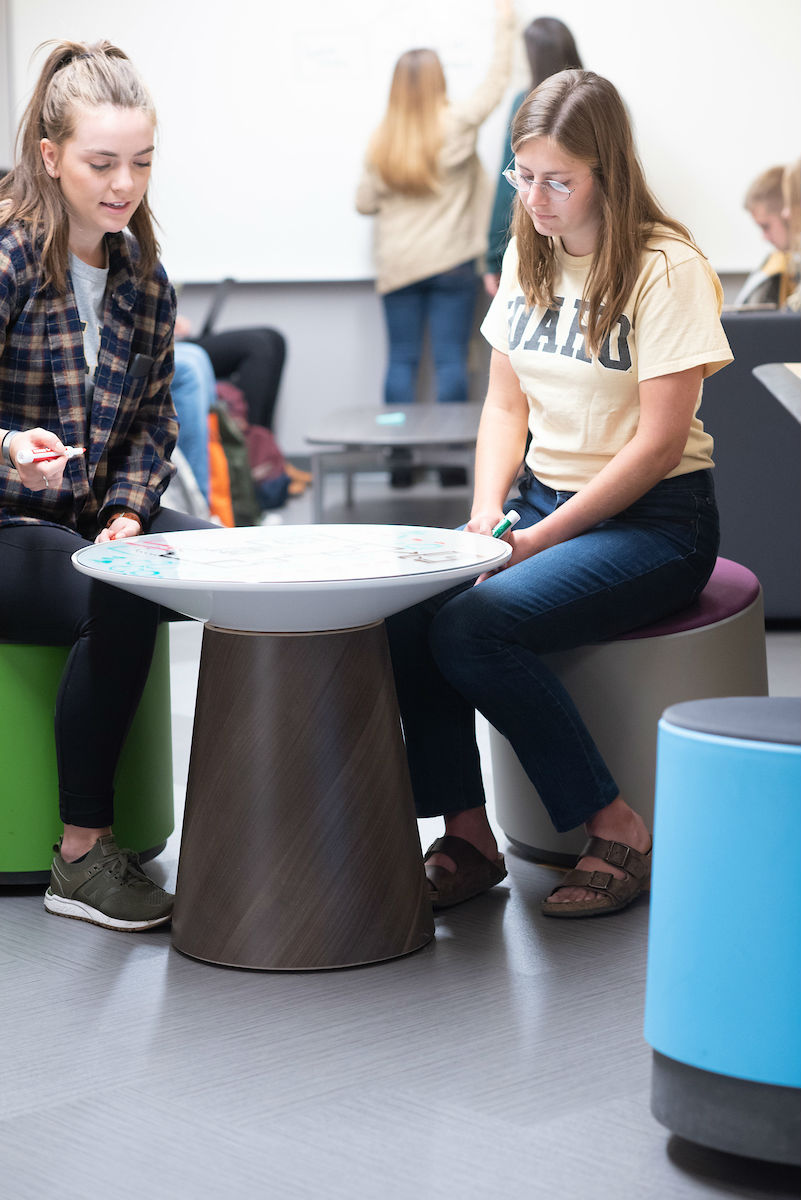
A Putting Green and Artwork Add Vibrancy
The students’ results came to a head in spring 2018 with the gutting of large swaths of space and complete redesigns.
The basement now houses a lounge where Andersen, who graduated from the College of Art and Architecture (CAA) with a bachelor’s in interior design in 2015 and a master’s in architecture in 2017, said students can “bounce ideas off each other” in a less structured environment. As they move further into the space, students can catch up on work at individual study areas before meeting their team. Newly designed conference rooms, with frosted glass doors, offer space for more formal, collaborative meetings.
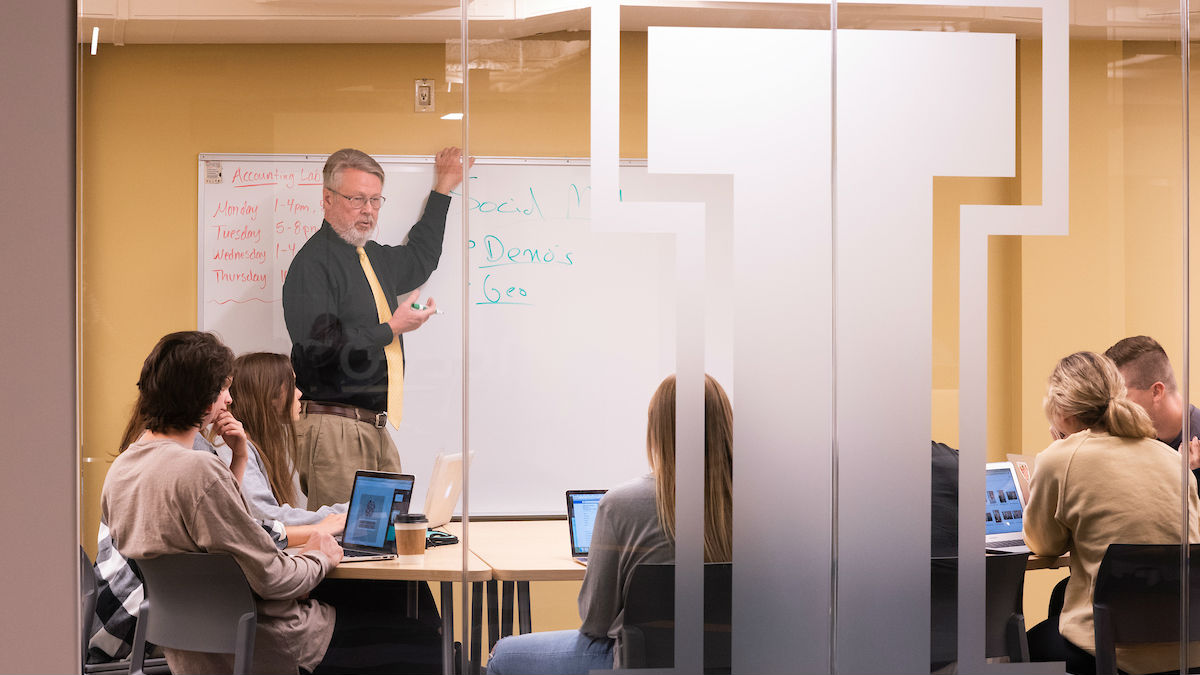
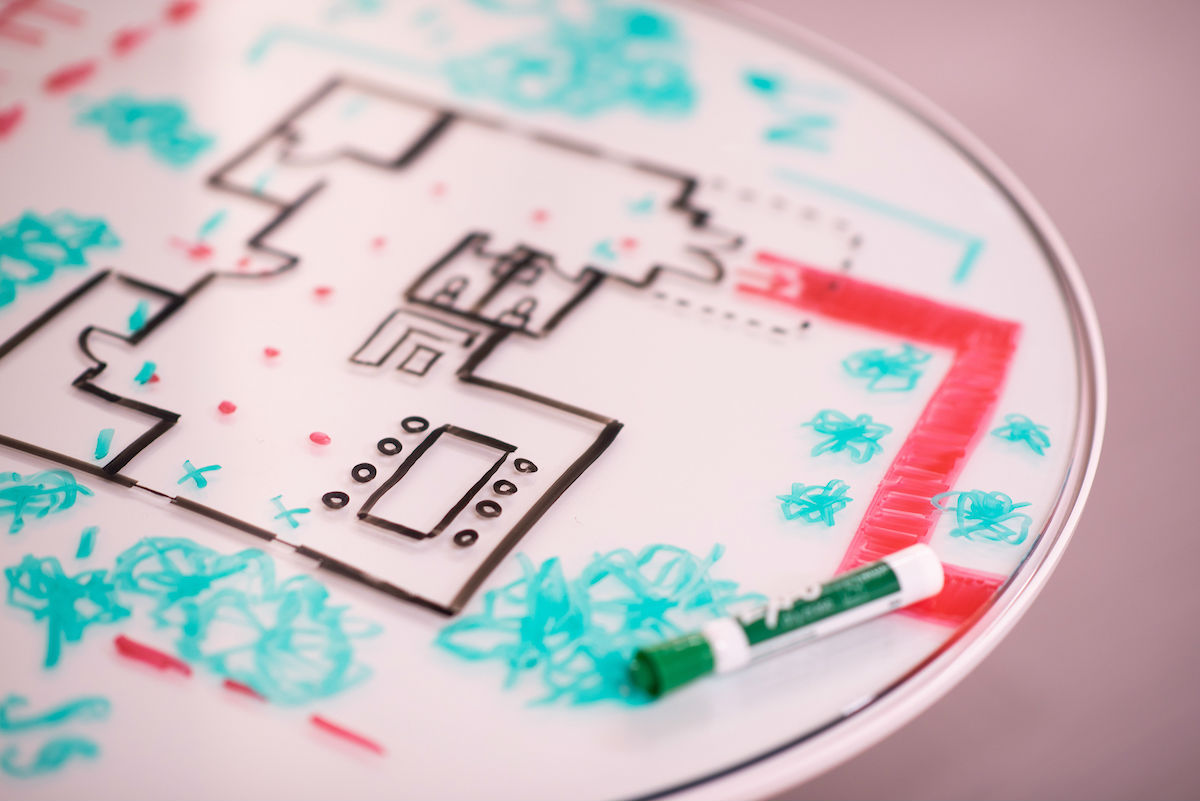
The basement also houses a kitchenette; modern, brightly colored couches, desks and walls; as well as new technology for students to practice presentations. As a nod to CBE’s PGA Golf Management program, a putting green is on its way, as is a new ceiling, so overhead pipes won’t be exposed and sound won’t echo. Contemporary artwork will also adorn the walls.
“We tried to create a space that reflects all types of learners — whether that’s the heads-down learner who wants to put in headphones and focus on their work,” Albertson said, “or the polar opposite who needs the hustle and bustle.”
While the project helped create an inviting place for students, it also fleshed out resumes for the graduates who worked on it. After earning their degrees from U of I, Albertson, Andersen and Johnson all immediately landed jobs in their fields.
“We tried to create a space that reflects all types of learners — whether that’s the heads down learner who wants to put in headphones and focus on their work, or the polar opposite who needs the hustle and bustle.”Erica Albertson
“There was an allure to my prospective employers in my ability to communicate with clients and understand the process we went through,” said Albertson, the 24-year-old Boise native who graduated with a bachelor’s in interior design in 2017. “In design school, everything we design is really imaginary. This was the first time we got to see our designs come to life, which was really rewarding.”
Johnson is now the director of sales and marketing for LifeGear Design Inc., a startup travel gear company in Vallejo, California, founded by the former director of production development and sourcing at The North Face.
Andersen and Albertson got jobs at design firms in Pullman and Boise, respectively.
Now, Awwad-Rafferty and McCollough are looking toward the future for additional projects on which students can collaborate.
“They’re willing to let their students take chances, make their own mistakes and help with any problems they run into,” Andersen said. “That speaks loudly to their belief in their students. And that’s what stands out to me about the project, they allowed students to have ownership.”
Article by Kate Keenan, College of Art and Architecture
Published November 2018
